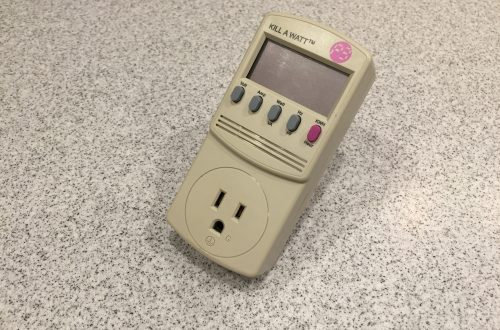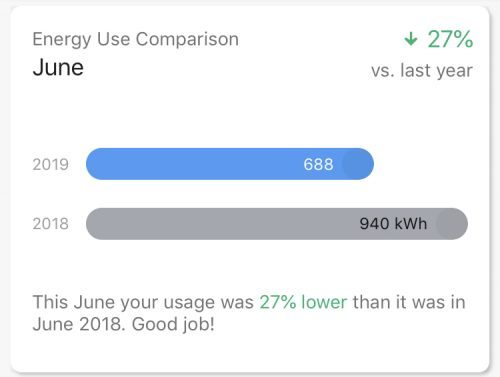Early on, LED bulbs were expensive, did not start immediately, could not dim, and had a weird color that was nothing like traditional bulbs. These days, those concerns have all been addressed. LED bulbs can be had for under $1 for a 60W equivalent bulb. I recently priced one at my local hardware store for a mere $0.74. It puts out the equivalent light output as a 60W bulb, but uses only 6.5W to do it! In addition to the power savings, you will also reduce unwanted heat in your house. Not a big deal in the winter, but in the summer, not only are you using more power with a traditional incandescent bulb, you also have to pay even more to cool the air it is heating!
When selecting replacement bulbs, there are a few key points to keep in mind, such as color temperature, size, output and whether it is dimmable. If you like the light color of a traditional light bulb, then a 2700K color will suit you just fine. As you get to the 4000K and up color range, the light takes on a bluish color that some people may find unappealing. These are often called “daylight” or “bright white” on the packaging. The 2700K color is usually called “soft white”. The bulb size will usually be printed somewhere on the bulb, or you can use this handy chart. Select an output that is roughly equivalent to your existing bulb and check the fixture it is housed in to be sure you do not exceed the fixture rating. The nice thing is that this is hard to do with LED bulbs, as most fixtures are designed for much higher incandescent bulbs. You can usually slip in a larger LED bulb if you need extra light without exceeding the wattage limitations of a fixture.
New Kid on the Block – LED Filament Bulbs
Another objection to LED or CFL bulbs is their appearance. And I used to agree. One thing I really don’t like to see is a bare CFL bulb in a fixture where the bulb is clearly visible. It just looks strange and is not very aesthetically pleasing. To a lesser degree the same could be said for the style of LED bulbs with the opaque plastic ball covering the LEDs inside the bulb. The good news is that there is now a solution to this problem. LED filament bulbs look much like a traditional incandescent bulb, but use LED elements to emit light. The picture above is the LED filament bulb and how it looks in an exterior fixture outside our house. No squiggly glass tubes or white plastic balls for us!
How Much Can you Save?
So how much can you expect to save by switching bulbs? Lets do some math. Say a light is used an average of 4 hours each day, that would be 1,460 hours each year. Power consumption is measured in kilowatt hours or kWh for short. Each kWh in Ohio costs $0.11, so 1,460 hours times 6.5w for the LED bulb is 9,490 watt hours, or 9.49 kWh (divide by 1,000). 9.49kWh times the 11 cents is $1.05 each year in energy. Doing that same math with a traditional 60 w bulb leads to an energy cost of $9.64 each year.
In summary, swapping traditional bulbs with LED bulbs can save you a lot of money over a year. But also think longer term. Over a decade, that same bulb would save you close to $100. The bulbs last longer as well, so while the old incandescent bulb would need replaced every few years, the LED bulb should last over a decade. For an average bulb, used 4 hours a day, you can save over $8 in electricity annually. Now think about how many bulbs you have in your house, and how many are on right now.
What are you waiting for? Turn off the lights and head over to your local home improvement center and start saving today!




